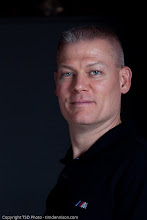 Anyone can take a photo of an entire boat, house, mountain, field...etc. In most cases, when you see these subjects in person, they are beautiful, if not stunning. Excitement to capture these visions often result in dull, flat images. A tourist eager to share with friends the things they saw, usually ends up trying to explain in detail what the photo did not capture. You've probably been on the recieving end of that discussion. Not so much fun is it?
Anyone can take a photo of an entire boat, house, mountain, field...etc. In most cases, when you see these subjects in person, they are beautiful, if not stunning. Excitement to capture these visions often result in dull, flat images. A tourist eager to share with friends the things they saw, usually ends up trying to explain in detail what the photo did not capture. You've probably been on the recieving end of that discussion. Not so much fun is it?This photo is an image of a boat. Hmmm, not much boat showing. I was walking along the pier looking for some good shots. I put my 70-200mm lens on to force myself to look only at details. I focused on a seagull at the top of this mast, and a second gull chased the first one off. This is the second gull landing on the mast.
Here is another boat photo, no...really.

Rather than try to capture the entire subject, take small, interesting chunks of it. The biggest difference in this conversation with your friends vs. the one mentioned above, is you will be answering questions like "what is this?" or "how did you get that angle?" instead of explaining to them, "you really had to be there".
 For a good exercise, put on a long zoom lens and only take photos with the top 25% of its range. This will force you to see things differently than you would normally. When you are performing this exercise, you may find you don't have to move very far between shots. I tend to do this alone since it can be pretty frustraitng to someone walking with you to only cover 1/4 mile every hour.
For a good exercise, put on a long zoom lens and only take photos with the top 25% of its range. This will force you to see things differently than you would normally. When you are performing this exercise, you may find you don't have to move very far between shots. I tend to do this alone since it can be pretty frustraitng to someone walking with you to only cover 1/4 mile every hour. You don't always have to get super-detailed. In the case of this bike, it is interesting in and of itself, but if you notice, it isn't a picture of a bike. It is a picture with part of a bike in it.
You don't always have to get super-detailed. In the case of this bike, it is interesting in and of itself, but if you notice, it isn't a picture of a bike. It is a picture with part of a bike in it. I happen to like reflections, and pursue windows where there are interesting items both inside, and outside. If I can combine an interesting reflection with an interesting subject that shows through, Chances are, the combination will be, ummm...interesting.
I happen to like reflections, and pursue windows where there are interesting items both inside, and outside. If I can combine an interesting reflection with an interesting subject that shows through, Chances are, the combination will be, ummm...interesting. This may be a photo of a whole birdhouse, but what it is to me is a small detail of a garden just off the main street.
This may be a photo of a whole birdhouse, but what it is to me is a small detail of a garden just off the main street. A front door is made more interesting by the rocking chairs and canned goods in the windows.
A front door is made more interesting by the rocking chairs and canned goods in the windows. I thought this mail slot was even more interesting than fact the door is painted purple.
I thought this mail slot was even more interesting than fact the door is painted purple. This old fire house has some old hardware that has been painted over on many occasions.
This old fire house has some old hardware that has been painted over on many occasions.So get out there and look for details. Don't get trapped into walking along main street USA taking photos of house after house after house. Show what that house is made of!



















